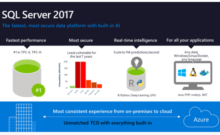Steve Jones posted a good editorial a month or so ago about why he typically prefers side-by-side migrations over in-place upgrades. If you are running virtualized and want to upgrade in-place then it is not horrendous if you need to revert back to a previous snapshot. However, you would then have to start the upgrade process all over again from the snapshot. A side-by-side migration you can leave the existing VM up until you are confident in your testing of the new instance and then perform the final backup / restore / migration steps before switching VMs.
Overall he provided a good list of things to plan for in a SQL Upgrade / Migration:
“This could be just moving the existing SQL Server instance to new hardware. It could be a version upgrade, consolidation, or any other reason to move. In any case, I’ll start with a general list of things to check. Let me know what I’ve missed:
Instance Level
- Check new hardware/software meets requirements for SQL Server
- Verify patches levels are the same (with items needed for installs)
- Map paths from old to new drives, verifying space
- Ensure all logins, server roles, credentials, and permissions are migrated.
- Migrate all sp_configure items
- Migrate startup stored procedures
- Migrate all linked servers
- Migrate all XE sessions
- Migrate Audits
- Migrate any server level cryptographic objects
- Migrate all jobs and agent settings (operators, alerts)
- Migrate SSIS stuff
- Migrate Resource Governor data
- Migrate Database Mail settings
- migrate replication settings at the instance.
Database Level
- Backup all databases
- Backup and certificates needed for TDE
- Restore databases with new paths
- Verify database ownership
- Ensure backups are running on the new instance
As a side note, dbatools will perform much, or maybe all (still trying to determine that), of what you need. There is a Start-SqlMigration that is very impressive. While I would still want a checklist to ensure the new system works as needed, I think I’d use the PoSh tools and then add anything else I need to them. ”
When you are planning on performing a migration of any sort it is good to have a plan. We recently put together a plan to migrate a Client Dashboard Solution from a custom onsite web service to a more familiar SQL batch solution. We approached it with a general plan /checklist for what we expected if things went right and we also had a plan to keep the solution working if we ran into unexpected issues and had to revert. This allowed a much easier conversation with local IT and removed a lot of the worry during the transition.
How do you like to approach planning?
Let us know in the comments below.




